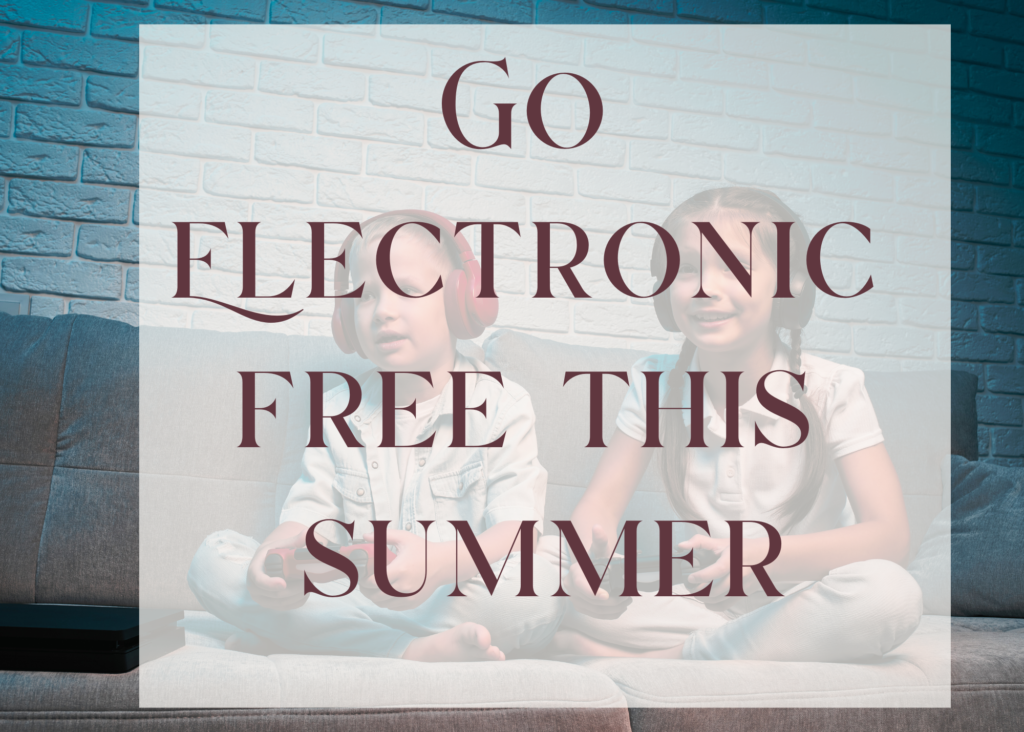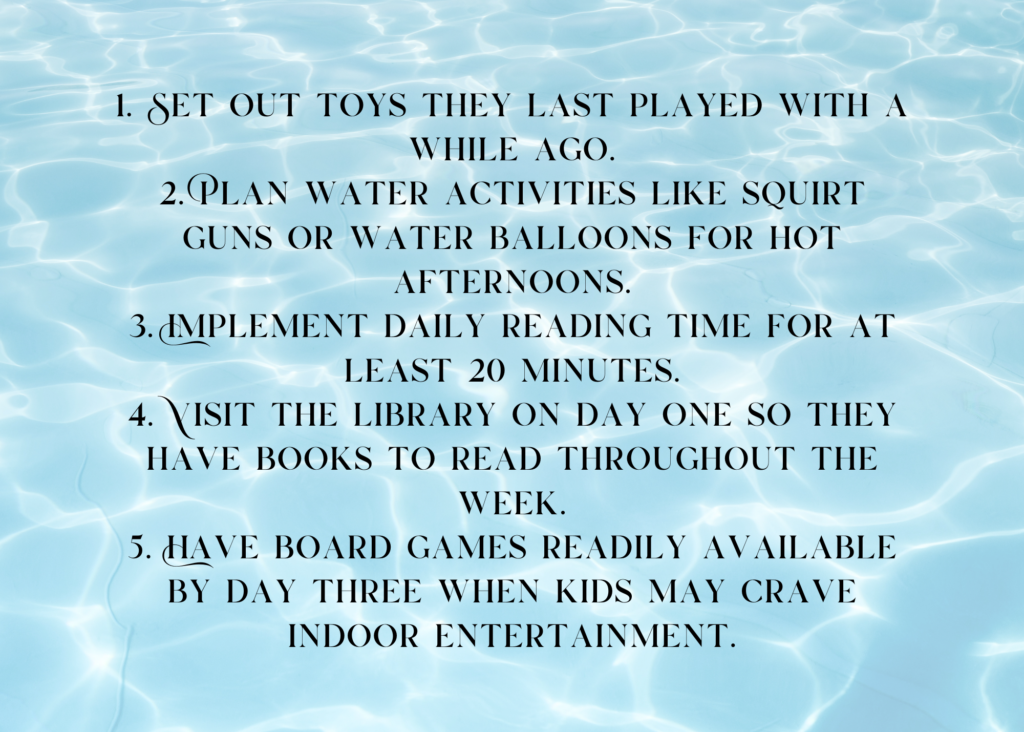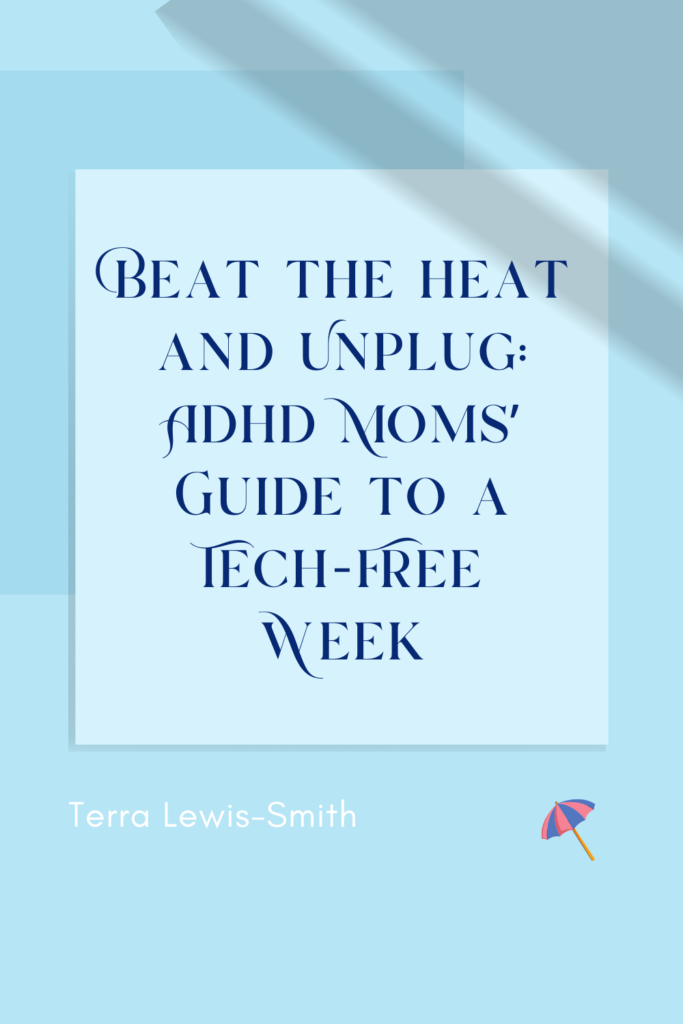
The lazy days of summer. The kids are playing and getting along for hours outdoors without a tablet or phone, or controller in sight. While you kick back, watch them play from your lounge chair. Sounds great, right? But if you like me, I have spent many summers planning summers with all sorts of fun and creative stuff to do only to be 5 days into summer, and the kids are already playing video games all day.
Surviving the summer with ADHD can be challenging but possible with some planning. Many moms want to be that perfect Pinterest mom and make every moment count during the 18 summers they have with their children. However, electronics often take over just a few days into the summer break especially if you and your kids have ADHD. Planning only one Pintrest Perfcet electronic-free first week to combat this, and have a great summer you all enjoy.

The initial three days will be tough, but after 72 hours, it gets easier. By the end of the first week, kids are more eager to play outside and engage in activities like going to the library or swimming pool. Electronics are here to stay; however, we can manage them by setting rules such as reading for 20 minutes or completing chores before using devices.

To help your kids adjust during those crucial first three days without electronics try these ideas out:

Additionally, garden work or lawn games can keep them occupied outdoors, while popsicles and ice cream provide fun incentives during food times.
After surviving that initial electronic-free week with your children participating in various planned activities including storytime at libraries and outdoor adventures at pools or bowling alleys – you’ll successfully find yourself better able to implement schedules involving chores alongside limited device usage throughout summertime!
If you have young children aged zero to three, plenty of engaging activities can help keep them away from electronics. For example, you can use a small wading pool with ice blocks and toys or introduce them to sandbox play. Taking them to storytime at the library is also an excellent option.
It becomes slightly more challenging for children aged three to six as they become more aware of electronic devices like TVs. To counter this, encourage basic chores such as bed-making before allowing screen time. Other fun activities include kiddie pools, homemade popsicles, water guns and balloons, and attending story hours at the library.

The age group between six and ten tends to be even more difficult due to increased addiction tendencies towards electronics. It’s essential for parents during this stage to set up various play stations with toys or games that capture their interest—such as Lego sets or action figures—and promote outdoor activities like water balloon fights. Ensure everything is ready for immediate engagement to maintain their attention.
For those first few days when breaking the cycle of electronic dependence seems most daunting, try setting up inflatable pools or creating yard games with frisbees and sidewalk chalk. Involving your kids in gardening tasks may also pique their interest while keeping them busy outdoors.
As for older children aged ten through eighteen—particularly teenagers—, it might be necessary to plan outings such as road trips or hikes instead of relying solely on home-based activities. Additionally, libraries are valuable resources for all ages; starting summer vacation by visiting one ensures your child has books they’re interested in reading throughout the season.
In Summery
Offer various appealing indoor/outdoor options tailored specifically toward each age group’s interests so that you can successfully minimize electronic usage among your children during summer break.

P.S.
Want more ideas? Here is a great list of Summer ideas to do with your kids:
P.S.S.
Want to have more control over days check out this e-book on how to plan your days to get more done.

